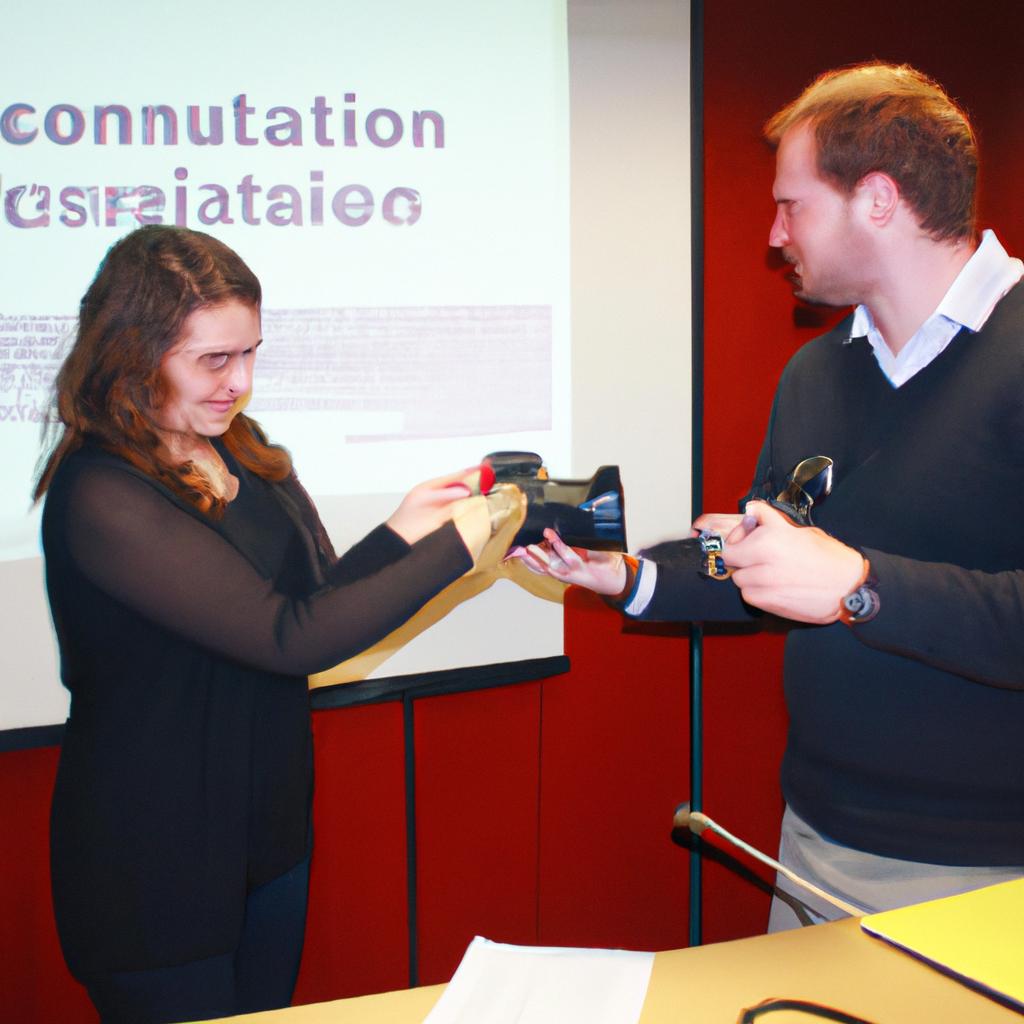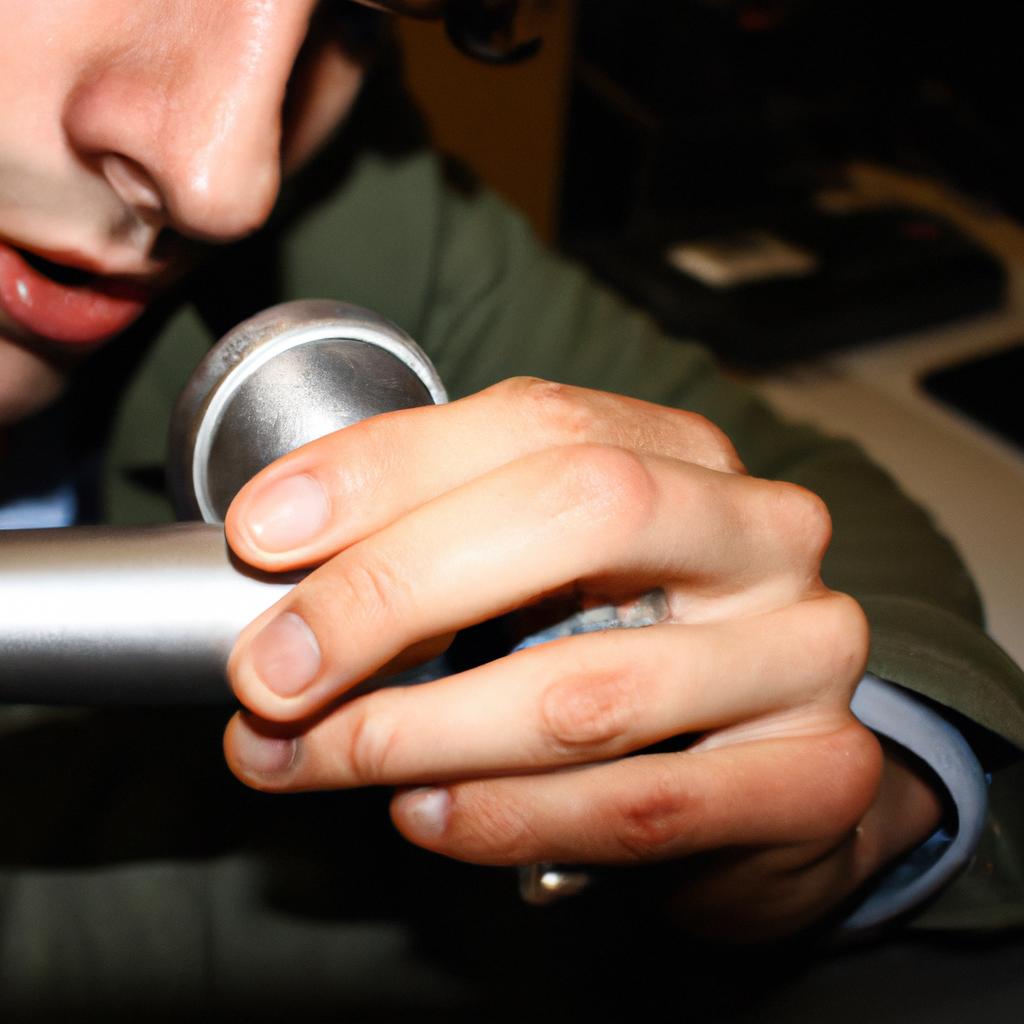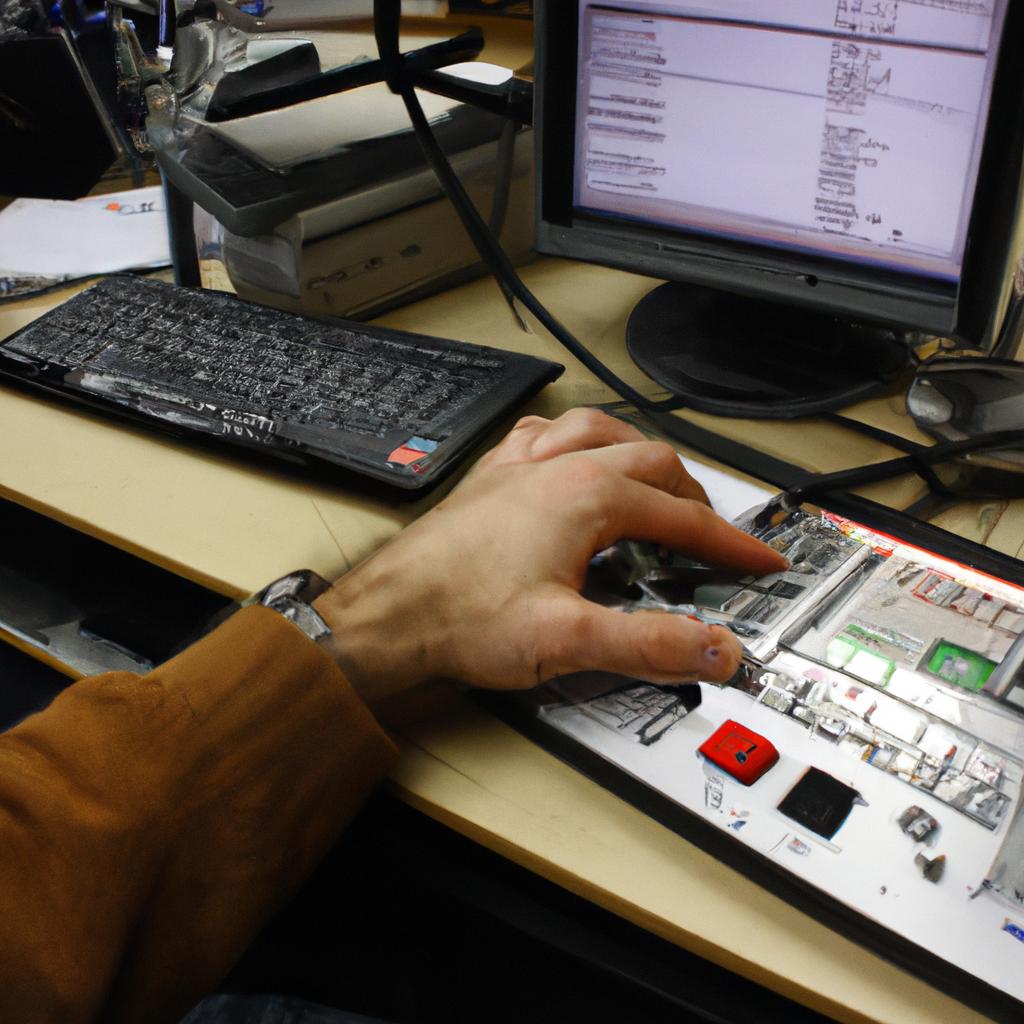In the digital age, where streaming services and online platforms dominate the media landscape, it is easy to overlook the enduring relevance of analog radio. Yet, despite advancements in technology, analog radio continues to hold a unique place in our lives. Take for instance the case study of Mrs. Johnson, an elderly woman living in a remote village with limited access to internet connectivity. Despite her isolation from modern conveniences, she relies on her trusty analog radio to stay informed about local news and weather updates. This example demonstrates how analog radio serves as a lifeline for individuals like Mrs. Johnson who are unable to embrace newer technologies.
Analog radio’s legacy lies not only in its ability to reach communities that may be overlooked by digital alternatives but also in its distinct advantages over digital audio broadcasting (DAB). Firstly, unlike DAB which requires stable internet connectivity or specialized devices, analog radios can function even during power outages or natural disasters when other means of communication may fail. This makes them particularly valuable in emergency situations where immediate dissemination of information is crucial for public safety. Secondly, while DAB offers a wider range of channels and higher sound quality, analog radios provide a simplicity and familiarity that many listeners find comforting. The tactile experience of tuning into different frequencies and adjusting the antenna can be a nostalgic and enjoyable activity for some, evoking memories of a simpler time when radio was the primary source of entertainment and information.
Moreover, analog radios are often more affordable compared to their digital counterparts, making them accessible to individuals with limited financial resources. This is especially important in developing countries or rural areas where internet access and digital infrastructure may still be lacking.
Analog radio also fosters a sense of community by bringing people together through shared listening experiences. The local nature of analog radio stations allows for the cultivation of regional identities and the promotion of local artists, musicians, and cultural events. It provides a platform for public discourse, allowing citizens to engage in discussions about local issues and connect with their neighbors.
While it is true that digital technology has revolutionized the way we consume media, analog radio continues to have its place in our lives. Its resilience in difficult circumstances, simplicity, affordability, and ability to foster community connections make it an enduring medium that should not be overlooked or underestimated.
The History of Analog Radio
Analog radio, a technology that has stood the test of time, holds immense significance in the realm of communication. To truly appreciate its legacy and advantages, it is important to delve into its fascinating history.
One prime example where analog radio played a crucial role is during World War II. In 1940, amidst the chaos of war, British citizens relied heavily on their radios for information and entertainment. Despite facing frequent bombings by the Luftwaffe, radio stations continued broadcasting vital news updates and morale-boosting music. This case study exemplifies how analog radio served as a lifeline during times of crisis.
- Reliability: Analog radios provide uninterrupted transmission even in remote areas or adverse weather conditions.
- Accessibility: With no dependence on internet connectivity or special devices, analog radios can be easily operated by individuals across all age groups.
- Community Building: By tuning in to local stations, listeners feel connected to their community and engaged with local events.
- Affordability: Compared to digital platforms requiring expensive subscriptions or data plans, analog radios offer cost-effective access to news and entertainment.
Furthermore, to illustrate the importance of analog radio’s cultural impact throughout different eras, let us explore a table showcasing notable milestones:
| Year | Milestone |
|---|---|
| 1895 | Guglielmo Marconi transmits first wireless signal across Bristol Channel |
| 1920s | Birth of commercial broadcasting; KDKA becomes first licensed public radio station |
| 1967 | FM stereo broadcasts introduced for superior audio quality |
| 1992 | Adoption of RDS (Radio Data System) enhances user experience with song titles and traffic alerts |
As we reflect on these significant achievements and recognize the emotional connection people have towards analog radio, it becomes evident that this technology has shaped the way we communicate and connect with each other.
Transitioning seamlessly into the subsequent section about “Analog Radio Technology Explained,” it is essential to understand how analog radio functions as a means of transmission in order to fully appreciate its enduring legacy.
Analog Radio Technology Explained
Transition:
Having explored the rich history of analog radio in the previous section, we now delve into a comprehensive explanation of analog radio technology. Through an examination of its components and functionalities, this section aims to provide readers with a deeper understanding of how analog radio operates.
Analog Radio Technology Explained
To illustrate the inner workings of analog radio, let us consider a hypothetical scenario where you are driving through a rural area with limited digital coverage. As you switch on your car’s analog FM radio, it tunes in to a local station broadcasting music and news content seamlessly. The transmission process behind this seemingly simple act involves several key elements that work together harmoniously.
At its core, analog radio relies on electromagnetic waves for signal transmission. These waves are generated by the broadcaster using an audio input source such as a microphone or pre-recorded content. Once converted into electrical signals, these audio inputs modulate what is known as the carrier wave – a high-frequency oscillating signal that carries information from one location to another.
The modulation process involves altering certain characteristics of the carrier wave based on variations in sound amplitude (loudness) and frequency (pitch). By doing so, the original audio content is encoded onto the carrier wave, allowing it to travel across physical space via antennas and reach receivers like your car’s FM tuner.
While digital technologies have emerged as popular alternatives to traditional analog systems, there remain distinct advantages offered by analog radio:
- Ease of Use: Analog radios require minimal setup or configuration, making them accessible even to those less familiar with modern technology.
- Reliability: In areas with weak or intermittent digital reception, analog signals often maintain consistent quality without interruptions or dropouts.
- Compatibility: Due to their widespread use over many decades, countless devices – including older vehicles and home stereos – are equipped with built-in support for receiving analog radio signals.
- Local Content Focus: Analog stations typically prioritize serving local communities, fostering a sense of connection and shared experiences among listeners.
| Advantages of Analog Radio |
|---|
| Accessible to all users |
| Consistent signal quality in weak reception areas |
| Compatibility with various devices |
| Emphasis on local content |
In conclusion, analog radio technology has stood the test of time due to its simplicity, reliability, compatibility, and focus on localized programming. However, as we proceed to the subsequent section about the benefits of analog radio transmission, it becomes clear that this legacy technology continues to offer numerous advantages over its digital counterparts.
Transition:
Moving forward into the next section on the benefits of analog radio transmission, let us explore how these characteristics contribute to its enduring appeal and relevance in today’s evolving media landscape.
Benefits of Analog Radio Transmission
Analog Radio: The Legacy and Advantages in the Era of DAB
Transitioning from our discussion on analog radio technology, let us now explore the benefits it offers in comparison to its digital counterpart. To illustrate this further, consider a hypothetical scenario where you are driving through a remote area with poor internet connectivity. As you tune into your favorite FM station on an analog radio receiver, you notice that the signal remains strong and clear despite the challenging terrain. This example highlights one advantage of analog radio transmission – its resilience in areas with limited or intermittent digital infrastructure.
Analog radio holds several advantages over Digital Audio Broadcasting (DAB) systems that contribute to its continued relevance today:
- Simplicity and affordability: Analog radios have been widely adopted for decades due to their simplicity and cost-effectiveness. Compared to DAB receivers, which require more advanced technology components, analog radios can be produced at lower costs, making them accessible to a broader range of consumers.
- Wide coverage and compatibility: Another notable benefit is the widespread availability of analog signals across various regions globally. Since analog frequencies were allocated long before the emergence of digital technologies, they have been optimized for maximum coverage even in remote locations. Additionally, analog radios can receive signals from different broadcasters without compatibility issues or restrictions imposed by proprietary digital standards.
- Familiarity and user experience: Many individuals grew up listening to analog broadcasts, forming nostalgic connections with specific stations or programs. The familiarity associated with turning a physical dial or tuning knob creates a sense of comfort and reliability that cannot be replicated digitally.
To emphasize these advantages visually, consider the following table:
| Advantage | Analog Radio | Digital Audio Broadcasting |
|---|---|---|
| Simplicity and affordability | ✅ | ❌ |
| Wide coverage and compatibility | ✅ | ❌ |
| Familiarity and user experience | ✅ | ❌ |
As the table demonstrates, analog radio excels in these areas, making it a preferred choice for many listeners. Its simplicity, affordability, wide coverage, compatibility, and nostalgic appeal contribute to its ongoing popularity despite the rise of digital alternatives.
Transitioning into our next section about Analog Radio’s resilience to interference, let us now explore how this technology overcomes challenges posed by external factors.
Analog Radio’s Resilience to Interference
Transitioning from the benefits of analog radio transmission, it is important to highlight its unique ability to withstand interference and provide uninterrupted listening experiences for users. This resilience has been proven time and again, making analog radio a reliable choice in regions with challenging geographical terrains or areas prone to signal disruptions.
To better understand this aspect, let us consider a hypothetical case study involving two neighboring towns, Town A and Town B. While both towns have access to digital audio broadcasting (DAB) services, they also experience occasional interruptions due to temporary power outages or severe weather conditions that affect the DAB network infrastructure. In contrast, Town A still relies on analog radio transmissions as an alternative source of entertainment during such instances. As a result, residents of Town A can continue enjoying their favorite programs without any disruption caused by external factors.
Analog radio’s resilience stems from several key factors:
- Robust Signal Transmission: Unlike digital signals that require precise reception conditions, analog signals are more forgiving when it comes to potential obstacles like buildings or natural barriers.
- Wide Coverage Area: Analog radio broadcasts typically cover larger geographic areas compared to DAB networks. This wider coverage ensures listeners in remote locations or rural areas where digital infrastructure may be limited can still access vital information and stay connected.
- Cost Efficiency: The implementation costs associated with maintaining existing analog infrastructure are often lower than upgrading entire systems to support DAB technology. This makes analog radio an economically viable option for broadcasters operating on tight budgets.
- Familiarity and Simplicity: Analog radios are widely available and affordable devices that most individuals already own or can easily acquire. Moreover, they do not require complex installations or technical expertise for operation.
By examining these aspects through the lens of our hypothetical scenario, we begin to appreciate how analog radio provides robustness against various forms of interference while offering accessible and cost-effective solutions for communities worldwide.
Transitioning to the subsequent section, we will delve into the unique listening experience that analog radio brings forth.
The Analog Radio Listening Experience
In an ever-evolving technological landscape, analog radio has maintained its relevance due to its resilience to interference. Despite the emergence of digital audio broadcasting (DAB), analog radio continues to provide a reliable and uninterrupted listening experience for millions of people worldwide.
To illustrate this point, let us consider a hypothetical scenario where a major sporting event is taking place in a crowded stadium. As thousands of spectators gather to watch the game, their electronic devices emit electromagnetic signals that can potentially interfere with DAB transmissions. In such situations, analog radio proves advantageous as it operates on different frequency bands and is less susceptible to interferences caused by nearby electrical devices or dense urban environments.
The advantages of analog radio’s resilience to interference extend beyond crowded stadiums. Here are some key reasons why it remains a preferred choice for many individuals:
- Robust Signal Strength: Analog radio broadcasts utilize powerful transmitters that ensure broad coverage even in remote areas or regions with challenging terrain.
- Seamless Reception: Analog radios have simple receivers that do not require complex decoding processes like their digital counterparts. This simplicity allows for smooth reception without any buffering delays.
- Compatibility: Analog radio receivers are widely available and affordable, making them accessible to diverse populations across various socioeconomic backgrounds.
- Emergency Communication: During natural disasters or emergencies when power outages occur, analog radios powered by batteries become vital lifelines for receiving critical information from authorities.
These factors contribute to the enduring popularity of analog radio among listeners who value consistent and reliable access to broadcast content. By embracing these benefits, users can enjoy uninterrupted music, news updates, and other forms of entertainment regardless of external circumstances.
With its proven track record in overcoming interference challenges, analog radio stands as a testament to its continued relevance in our technologically advanced world. In the subsequent section about “Analog Radio’s Continued Relevance,” we will explore how it adapts and thrives amidst the rise of digital alternatives, further solidifying its position as a reliable medium for audio broadcasting.
Analog Radio’s Continued Relevance
Now, let us delve further into the continued relevance of analog radio in today’s digital age.
One key advantage of analog radio is its accessibility. Unlike digital platforms that require internet connectivity or specific devices, analog radios can be found in almost every household, car, and public space. This ubiquity ensures that people from all walks of life can access news, entertainment, and cultural programming without any barriers. For instance, imagine a small rural community where internet access is limited; analog radio provides an essential lifeline for residents to stay informed about local events and engage with their community.
Furthermore, analog radios offer a sense of nostalgia and familiarity that cannot be replicated by digital alternatives. The tactile nature of tuning dials and adjusting antennas creates a tangible connection between the listener and the broadcasting medium. In this fast-paced technological era, such physical interaction fosters a unique bond between individuals and their chosen stations.
To illustrate the emotional impact of analog radio on its audience:
- Sense of belonging: Analog radio acts as a unifying force within communities, providing shared experiences and fostering a sense of belonging.
- Comforting soundscape: The crackle of static or faint background noise often associated with analog broadcasts can evoke feelings of coziness and warmth.
- Unexpected discoveries: Stumbling upon new stations while scanning through frequencies adds an element of surprise and excitement to the listening experience.
- Audio aesthetics: Analog transmission has a distinct audio quality characterized by subtle nuances that some find pleasingly nostalgic.
To exemplify how these emotional connections manifest themselves among listeners, consider the following table:
| Listener | Emotional Response |
|---|---|
| Jane | Nostalgic joy when she hears her favorite childhood songs on her old transistor radio |
| Mark | Sense of community as he tunes in to a local talk show and engages with the host and other listeners |
| Sarah | Relaxation and comfort as she listens to classical music on her vintage analog radio during her evening routine |
| David | Excitement and curiosity when he discovers a pirate radio station while exploring different frequencies |
In conclusion, despite the rise of digital broadcasting technologies, analog radios continue to hold significant advantages. Their accessibility, nostalgic appeal, and ability to foster emotional connections make them an enduring presence in our society. As we move forward into an increasingly digital world, let us not forget the unique experiences that analog radio offers and appreciate its continued relevance in enhancing our listening journey.
 K7BUC
K7BUC



